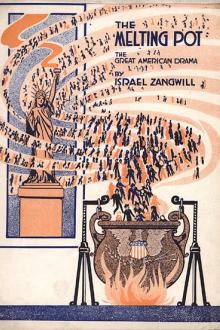No Modernism Without Lesbians, Diana Souhami [love books to read txt] 📗

- Author: Diana Souhami
Book online «No Modernism Without Lesbians, Diana Souhami [love books to read txt] 📗». Author Diana Souhami
these two extraordinary women
Sylvia said of herself that she was the only American to discover La Maison des Amies at that time. She described herself as ‘a beginner, but a good beginner’ in modern French writing. ‘While the guns of war boomed’ she joined Adrienne’s subscription library and spent many hours in ‘the little gray bookshop’, smoking and talking with Adrienne and the French authors who called in – some of them from the front and in uniform. At the Bibliothèque nationale, she had studied their work. At Adrienne’s, André Gide gave readings of Paul Valéry’s poems; Jules Romains, in uniform, read ‘Europe’, his poem about longing for peace in a continent that was being destroyed by war. At musical evenings at the shop, Sylvia heard new music by Erik Satie and Francis Poulenc. She absorbed the creative magic of being bookseller, librarian, impresario all under one roof and with the personal stamp of the owner. And she saw, what she had long felt, how here was the Paris not of her father, but the city of new ideas where she could be herself and nurture her aspirations and hopes both for love and a ‘book plan’ of her own.
Adrienne said Americans appreciated in Europe in general, and in France in particular, what they did not have at home, ‘what is calm, old, graceful and made by hand’. At the same time they brought, she said, ‘without spoiling the decor’, new ways of seeing, and the technology and innovations of the twentieth century. As a French woman she was drawn, through Sylvia, to read contemporary American writers not then known in France. Americans ‘have democracy in their blood’, she said, ‘it is their tradition, their reason for being’. In literature, this love of democracy allowed strictures and boundaries to break and new ideas and thinking to come in.
In appearance, they were opposites: Adrienne wore full ankle-length skirts that made her look stouter than she was – and she was stout, ‘all curves and placidity’. Sylvia was thin and nervous. Both were strong, independent, intelligent and imaginative. Both effused the same warm humanity. They were open-minded and neither was answerable to a man or to men.
Janet Flanner, who moved to Paris in 1922 with her lover, Solita Solano, and as Genêt began her fortnightly ‘Letter from Paris’ for The New Yorker three years later, viewed them as a couple. She wrote with affection and admiration of ‘these two extraordinary women—
Mlle. Monnier, buxom as an abbess, placidly picturesque in the costume she had permanently adopted, consisting of a long, full gray skirt, a bright velveteen waistcoat, and a white blouse, and slim, jacketed Sylvia, with her schoolgirl white collar and big colored bowknot, in the style of Colette’s Claudine à l’École.’
among the valiant Serbs
The war festered on and put Sylvia’s ‘book plan’ on hold. Only when Germany surrendered in November 1918 could she consider how to earn, save, and forward the project. She had no capital, knew nothing about business and all she knew about books was that she loved them. She and Adrienne discussed possibilities. Initial thinking was for Sylvia to open a branch of La Maison des Amies in London or Greenwich Village. Adrienne favoured New York. ‘She doesn’t like English things,’ Sylvia said. Sylvia’s mother, too, encouraged the New York idea and was willing to put her savings into it, but her capital was insufficient to make it viable.
From January to July 1919, to earn money and help with post-war reconstruction, Sylvia and Holly worked for the American Red Cross in Belgrade. Ten million fighting men had died in the war. Eight million horses. Nor did the dying end with the cessation of fighting. The influenza pandemic after the war killed more than thirty million people worldwide. Sylvia’s unit ‘distributed pyjamas and bath towels among the valiant Serbs’. She scorned the male hierarchy of the Red Cross: men getting the managerial jobs and higher wages, women taking orders and doing the menial work.
In Serbia, at the military hospital where she worked at Palanka, sixty miles from Belgrade, she saw the reality of war: ‘destruction, deprivation, skeletons of horses by the roadside, I don’t know if the war killed them or just hunger.’ In an epidemic of typhoid,
20 to 30 patients died every day – the bodies piled in a room and left till someone had a spare moment to put them away for ever in the ground. They were mostly Bulgarian prisoners so no one bothered much about it.
The water supply came from a well containing a German prisoner who had fallen in some time ago and had not as yet been removed. There were 30 beds for 250 men and the patients were crowded together in layers on the floor, absolutely no nursing provided for them, their uniforms rotting on them. The dying men had their pockets looted by the prisoner attendants, who never attended to them except to perform this last little service for them.
London was not the town to start my shop in
The Treaty of Versailles, signed on 28 June 1919, marked the official end to the killing. Sylvia wrote to Cyprian that she had more or less decided to open her bookshop in London:
I really don’t know where I shall find the capital, and they say the town is crammed at present – no rooms whatsoever.
She crossed the Channel to look for premises to rent and voiced hope that Cyprian, Holly and their mother would all meet with her in September to help get the venture launched.
Within weeks she was back in Paris. ‘One look was enough to show me that London was not the town to start my shop in.’ Adrienne thought a better idea would be a little American bookshop stocked





Comments (0)